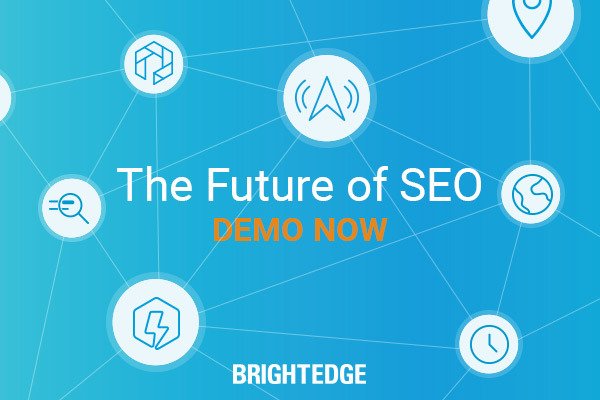Understanding the micro-moment has become the cornerstone to the modern customer journey. For marketers to accurately reach their consumers, they must be able to interpret these moments and anticipate what visitors want to see.
For marketers to optimize their marketing and sales process, they need to track how people move through the sales funnel. The greater the insight they have into this process, the easier it is to gauge how well they reach their customers. They also gain a better understanding of the decision-making process that their customers go through before they make a purchase.

In the past, this journey used to be linear and relatively straightforward. People followed a predictable step-by-step process that allowed marketers to measure their success at each stage and therefore understand their weaknesses and strengths. This has changed, however.
The customer journey has splintered and it has become increasingly difficult to understand what triggers purchases. Even though digital marketing is no longer a new industry, it remains challenging for many -- even seasoned marketers -- to understand what triggers a lead or sale and understanding the micro-moment.
Instead, marketers must look at a variety of metrics to try and find certain behavior patterns, such as ads that bring in more engaged traffic or keywords that attract more people interested in making an actual purchase. It has become clear to those in the industry that the customer journey no longer follows a straight path. It is now a series of fragmented moments that do not always occur in a predictable order or timetable.
This is the result of the transforming way that customers interact with brands online. They now control these interactions. They can reach out to brands directly, easily share their opinions and reviews with others through social media, and they can investigate a plethora of options to solve their problem with just a few searches on the computer.
For brands to meet the needs of these customers, they must be willing to use cross-channel marketing that empowers them to build bonds with customers no matter the device they use and where they are on the customer journey. Understanding the micro-moment will enhance brands' strategies and result in greater returns for brands -- US retailers see a 16 percent increase in search ad conversions when they use cross-device data. Here is what brands need to know about putting this strategy to work for them.
Understanding the micro-moment
To build a successful marketing strategy and reach consumers on this modern customer journey, understanding the micro-moment is important. These high-intent touch points occur when customers have an immediate need that they want addressed.
Google has been increasingly encouraging brands in understanding the micro-moment and taking them into account throughout their marketing strategies. A paper the company released stated that nearly a third of smartphone users switched to another site or app because the original one did not meet their needs.
More than half of smartphone users have also made purchases from brands other than their intended company because of the usefulness, or lack thereof, of the information provided. These micro-moments also impact purchases made offline.
An estimated 87 percent of customers do research before entering a store. As a result, the information people access during micro-moments on their devices impact where they shop and what they buy. The ability of brands to serve customers during their micro-moments impacts the bottom line.
Marketing to customers in the micro-moment across multiple devices
Brands that want to succeed with understanding the micro-moment must also know the types of content that are most likely to attract consumers throughout the various touch points.
Google has divided micro-moments into four main categories:
- I-want-to-go moment
- I-want-to-know moment
- I-want-to-do moment
- I-want-to-buy moment
1. The I-want-to-go moment. During this particular micro-moment, customers are interested in going to a particular place. Content that provides them with information about how to get to the desired location, such as maps, addresses, and other location-specific information will be the most helpful.
2. The I-want-to-know moment. Customers in this micro-moment are more interested in information than making a purchase just yet. They want to find content that helps provide them with insight and suggestions. These customers are not interested in finding a sales page, they want blog posts, videos, or other types of helpful content that provides them with the information they need.
3. The I-want-to-do moment. Customers interested in the I-want-to-do moment have a particular task in mind that they want to accomplish, and they want to see content that guides them. This could include material such as how-to videos, instructional blog posts and images, recipes, or similar content that helps the visitor achieve their goal.
4. The I-want-to-buy moment. During this particular micro-moment people prepare to make a purchase. They want to hear about deals or coupons, options to buy their desired items online quickly, and any information that would be helpful to them as they finalize their purchase decision.
For brands to effectively market to people across the new buyer’s journey, they need to create the content that their target personas will appreciate throughout the different micro-moments. This requires creating a variety of different types of material that addresses the different micro-moments and the unique needs that people have. Think about how each of these touch points relate to your customers and what they might look for at each moment.
5 steps to successful marketing in 2017
- Identify the keywords that interest your customers
- Align content to the micro-moments
- Create content that addresses the needs of your targeted customers
- Measure your progress
- Continue to refine and improve your strategy
1. Identify the keywords that interest your customers. You need to look at consumer patterns on your website, do competitive analysis, and monitor trends within your industry to gain a better understanding of what customers want to read.
2. Align content to the micro-moments. Once you have identified your keywords, determine the micro-moments that these terms most closely align with and the types of content needed to address people in those moments. Remember that Google is heavily invested in the micro-moment and thus works to tailor the SERPs to the micro-moment of the customer.
Looking at the types of content that appear most prominently on the SERP for a particular term or phrase will provide you with insight into the user’s likely intent. The BrightEdge platform also provides you with clear intent signal functions to help you understand the micro-moment you must cater to with a particular keyword.
3. Create content that addresses the needs of your targeted customers. Create a variety of types of material so that you offer clear value for people across the variety of touch points. Also make sure that your content is ready for users regardless of the device they use to access it. This means employing mobile-optimization best practices.
4. Measure your progress. As you develop and publish your content, you want to carefully track how that material performs. Look at engagement metrics to see how well people find your content and how much they interact with it. Look at its impact on your conversions and revenue.
5. Continue to refine and improve your strategy so that it becomes more effective and efficient. Use the insights from your measurements as well as regular competitive analyses and trend monitoring to continue to improve your marketing strategy for the micro-moments along your modern buyer’s journey.
Marketers need to be able to track how people progress towards conversion on their websites. Since this journey has been fragmented, however, it has become significantly more challenging.
Understanding the micro-moment has become critical for brands so they can impact their ideal personas, and create content that maximizes the use of these touch points. This will be your key to successful SEO in 2017.


